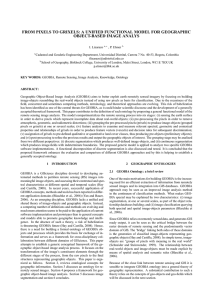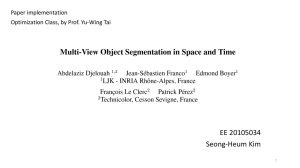1. ______ is changing consumers' perceptions of a brand in relation
advertisement
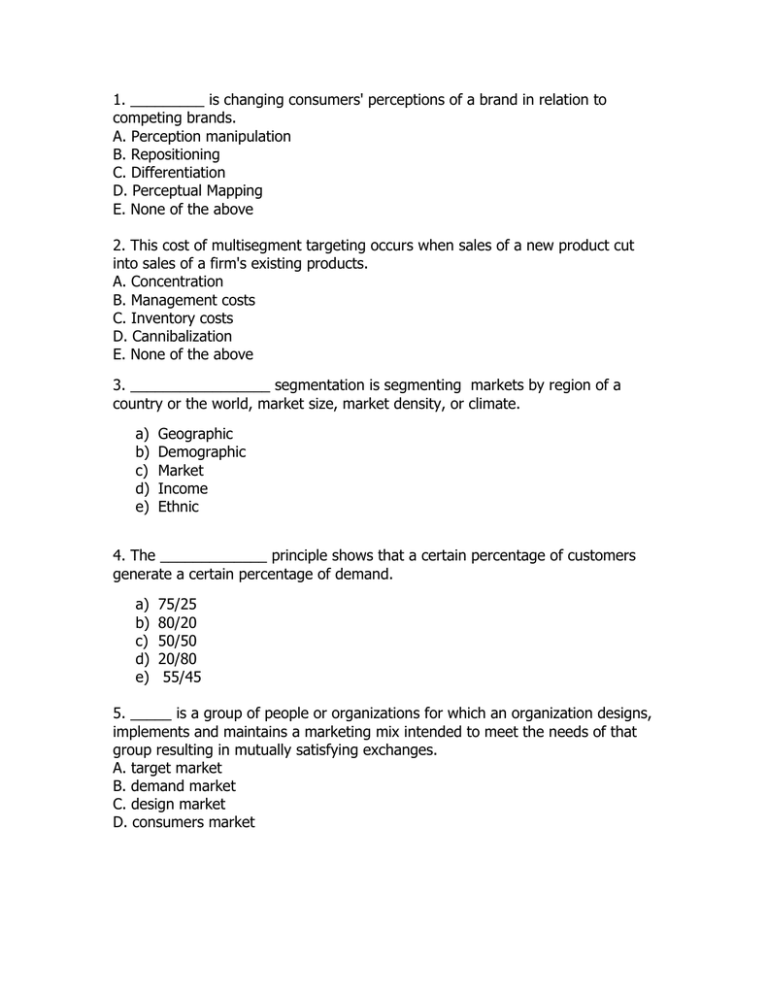
1. _________ is changing consumers' perceptions of a brand in relation to competing brands. A. Perception manipulation B. Repositioning C. Differentiation D. Perceptual Mapping E. None of the above 2. This cost of multisegment targeting occurs when sales of a new product cut into sales of a firm's existing products. A. Concentration B. Management costs C. Inventory costs D. Cannibalization E. None of the above 3. _________________ segmentation is segmenting markets by region of a country or the world, market size, market density, or climate. a) b) c) d) e) Geographic Demographic Market Income Ethnic 4. The _____________ principle shows that a certain percentage of customers generate a certain percentage of demand. a) b) c) d) e) 75/25 80/20 50/50 20/80 55/45 5. _____ is a group of people or organizations for which an organization designs, implements and maintains a marketing mix intended to meet the needs of that group resulting in mutually satisfying exchanges. A. target market B. demand market C. design market D. consumers market 6. What is market density? A) How much people weigh within a geographic area B) The proportion of people within a specific social class living in a geographic area C) The number of people within a unit of land, such a census tract D) The level of intelligence within a unit of land, measured by percentage of college degrees earned E) The reason why there are no supermarkets in Wyoming 7. Geodemographic segmentation clusters potential customers into A) Racial groups B) Market groups based on emotional needs of people within a specific area C) North, South, East, West D) Zones of company influence, e.g. Dunkin' Donuts/Northeast E) neighborhood lifestyle categories 8. What composes the criteria for segmentation? A. Substantiality B. Accessibility C. Responsiveness D. Identifiability and Measureability E. All of the above 9. Which of the following is NOT a bases for segmentation? A. Benefits Sought B. Demographics C. Motives D. Psychographics E. Usage Rate 10. Which are important segmentation variables? A. Company Size B. Product Use C. Geographic location D. Type of Company E. All of the above 1. B 2. D 3. A 4. B 5. A 6. C 7. E 8. E 9. C 10. E
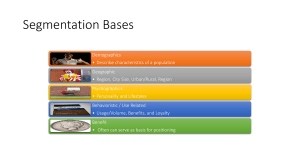


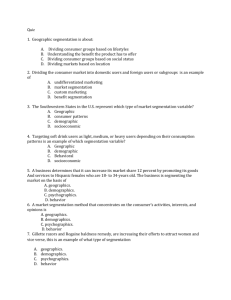





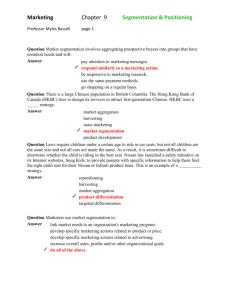

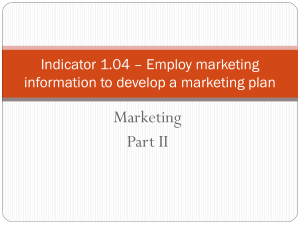


![Professor Vipin [Year] Unit 2 Marketing Environment](http://s2.studylib.net/store/data/014561322_1-d4569c639a87980b5d791d6181038377-300x300.png)

